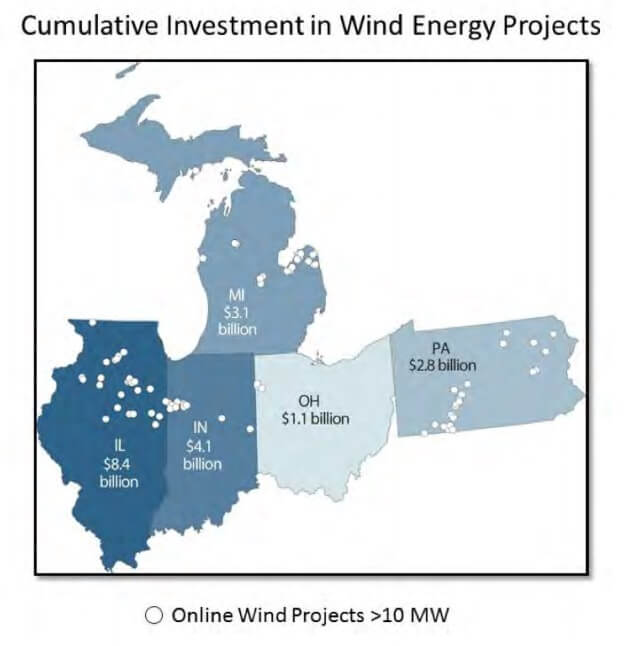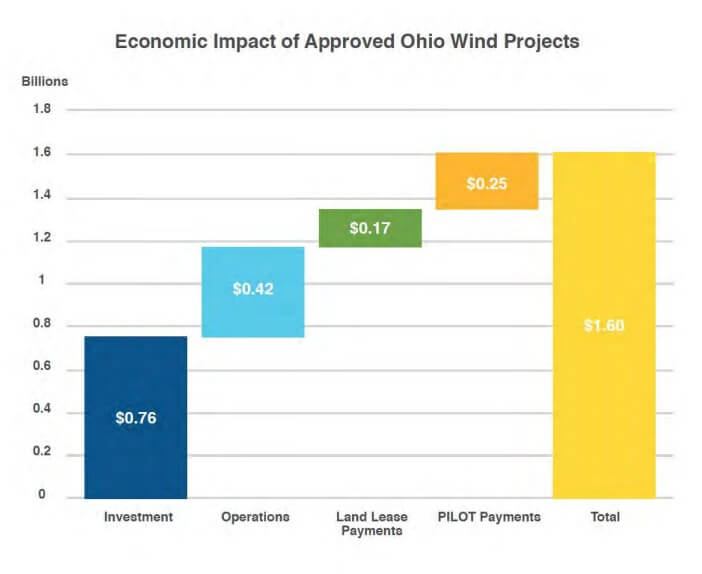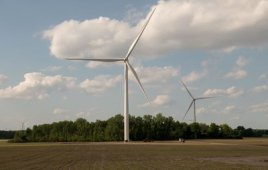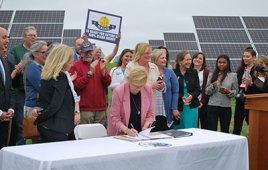This article comes from the Renewable America Wind Energy Foundation and in collaboration with the AWEA.
In June 2014, without public testimony or justification, Ohio passed a statewide property line setback law for wind power development that is one of the most stringent in the nation and far exceeds more common property lines setbacks implemented across the country. As a result, development has stalled in the state, depriving many of Ohio’s rural counties of the economic benefits and clean energy enjoyed by farming and ranching communities across the nation.
Based on Ohio siting applications and company records, wind project developers have plans to build over 3,300 megawatts of new wind projects. These projects are estimated to bring over $4.2 billion in local economic activity over their life and would create more than 13,000 jobs. Local governments and schools would receive an estimated $660 million in payments in lieu of taxes (PILOT) payments over the life of these projects – about 70% to school and the remainder to local governments – and landowners would be paid over $440 million to host these wind turbines.

There are over 3,300 megawatts of new wind projects either approved or proposed in Ohio. If completed, the projects would generate $4.2 billion in local economic activity. Who in their right mind would vote against that?
Moreover, the energy generated from these wind projects would be able to supply the electricity needs of more than 900,000 Ohioan homes. Without a revision to the state’s onerous setback laws, these investments remain at risk, with many projects unlikely to continue to completion.
Ohio also stands to gain from supply chain development that would accompany the expansion of the wind industry in the state. With more wind-related manufacturing facilities than any other state, Ohio is missing a huge economic development opportunity by not revising its wind setback laws. In many cases, this heavy machinery or materials companies have been able to make up for slack in other industries’ demand by supplying to the wind industry. Continuing to grow Ohio’s wind industry will provide a larger market for these manufacturers and incentivize others to set up in the state.
A few key facts
- There are over 3,300 megawatts of new wind projects either approved or proposed in Ohio.
- If completed, the projects would generate $4.2 billion in local economic activity, such as:
- $660 million in PILOT payments to schools and local governments
- More than $440 million in land lease payments to local farmers
- 13,000 jobs created
- Enough clean power for more than 900,000 Ohioan homes
Legislative history
In June 2014, a last minute amendment containing a provision to revise the state’s property setback requirements for wind projects was inserted into the state’s annual budget bill, House Bill (HB) 483. As a result, Ohio now has the one of the most stringent statewide setback requirement in the nation, according to the National Conference of State Legislatures.

More than $440 million in land lease payments to local farmers could be generated along with 13,000 jobs, and enough clean power for more than 900,000 Ohio homes.
The new law requires that wind turbines in any wind farm application submitted to the Ohio Power Siting Board (PSB) on or after September 15, 2014, must be located at least 1,125 feet from the tip of the turbine blade to the nearest adjacent property line unless the applicant obtains the appropriate waivers.
In practice, this requires setbacks of about 1,300 feet from each turbine’s base to the edge of neighboring property, even if the presence of farmland means that the distance to an actual home is much greater.
Although the law lets already-permitted projects continue, they may only proceed if no amendments to the existing certificates become necessary. Since typical wind projects often need to amend their certificates several times during the planning process – for both economic and environmental reasons, this provision does little to protect already planned wind projects, which are now subject to the discretion of the Ohio PSB.
As a result, even the investments in “grandfathered” projects are at risk. HB 483 was part of Governor Kasich’s mid-biennium budget review, and most of the law dealt with tax cuts, spending for social programs, and other matters. The wind setback provision appeared for the first time when the Ohio Senate Finance Committee reported the bill out in May 2014 and there was no public testimony on the provision. Since the new law was enacted, no applications for new wind farms have been submitted in the state.
For the rest of the 20-page article: https://goo.gl/2jJ9yP
Filed Under: Uncategorized




